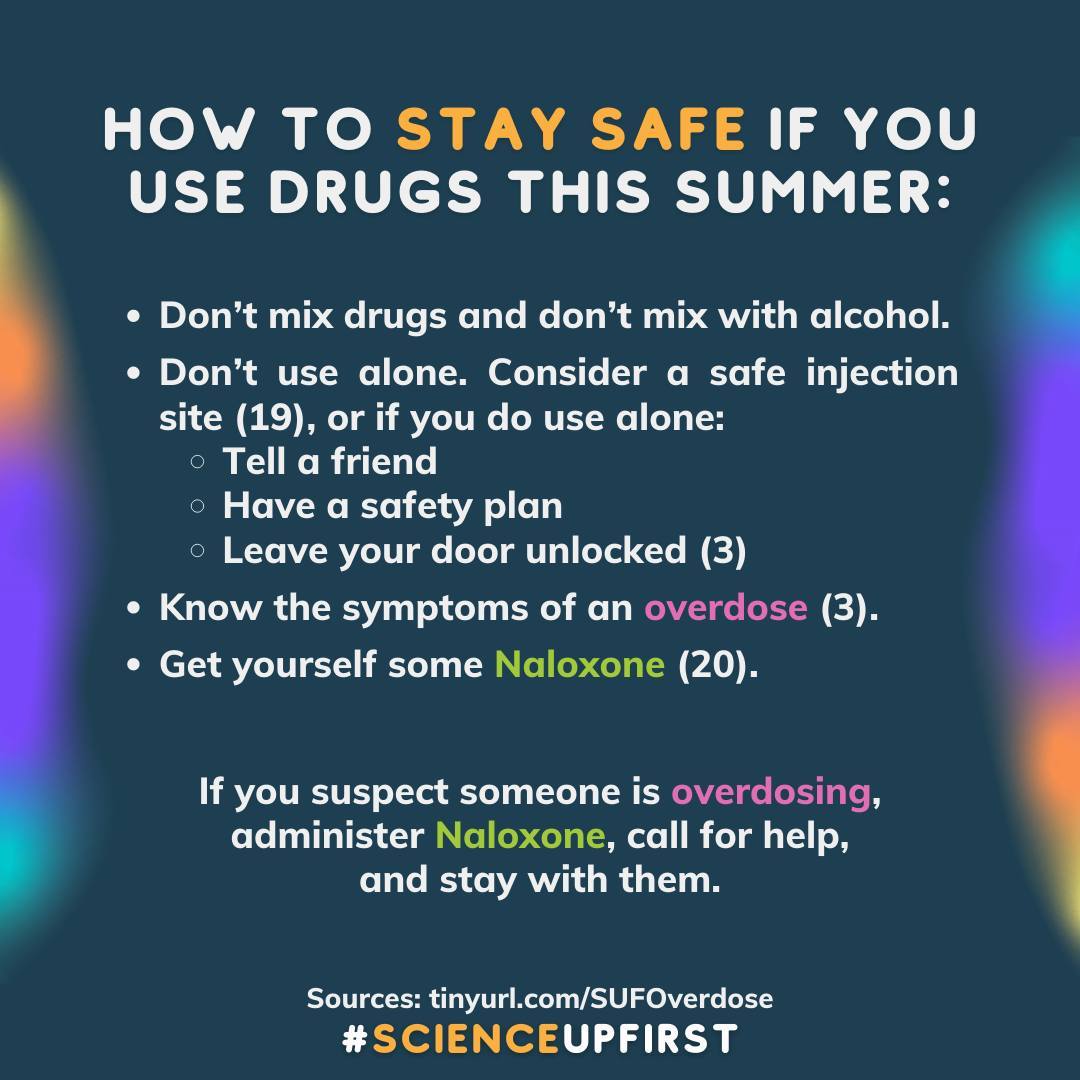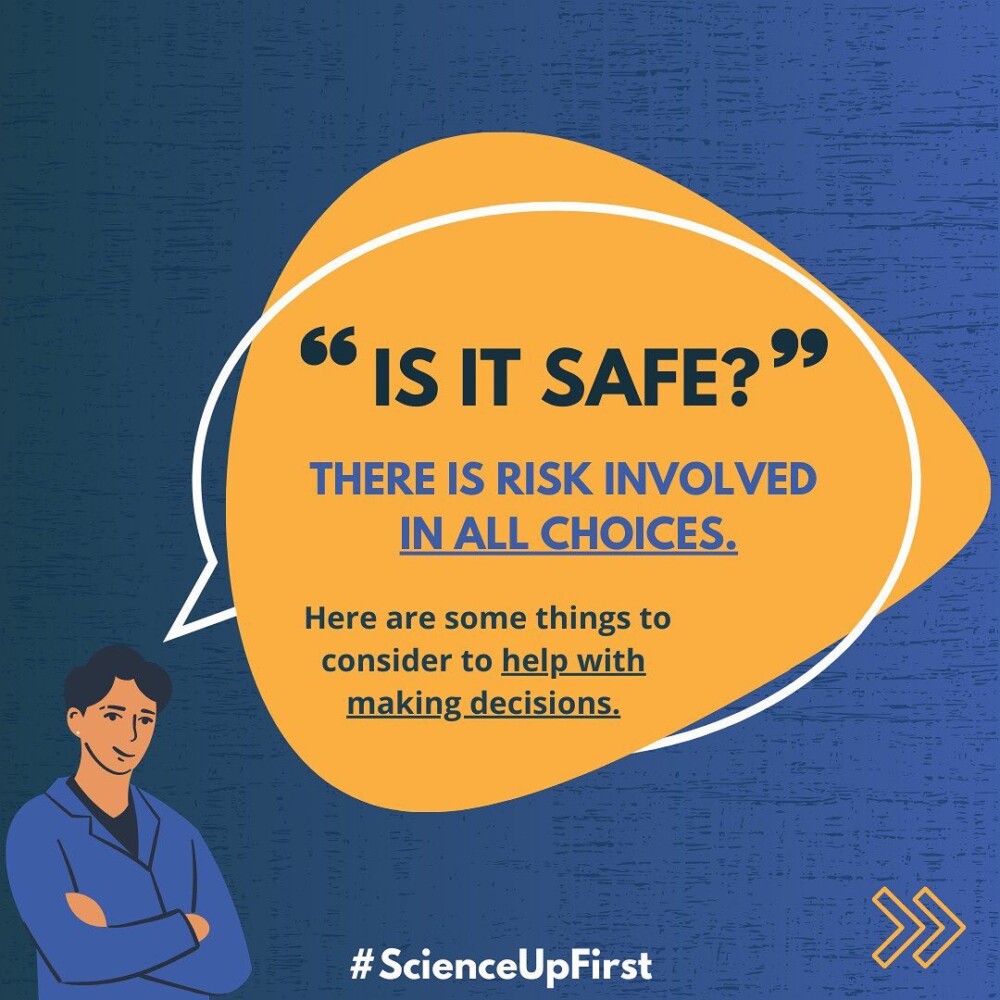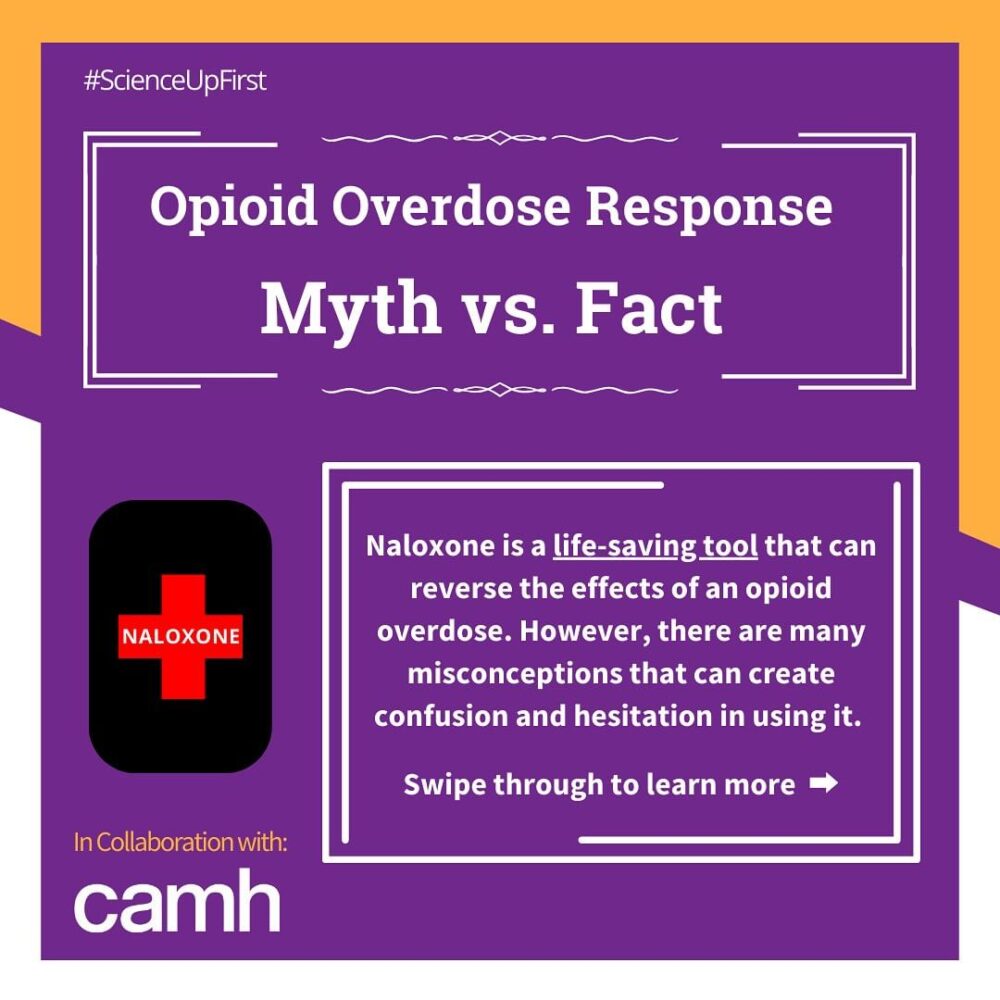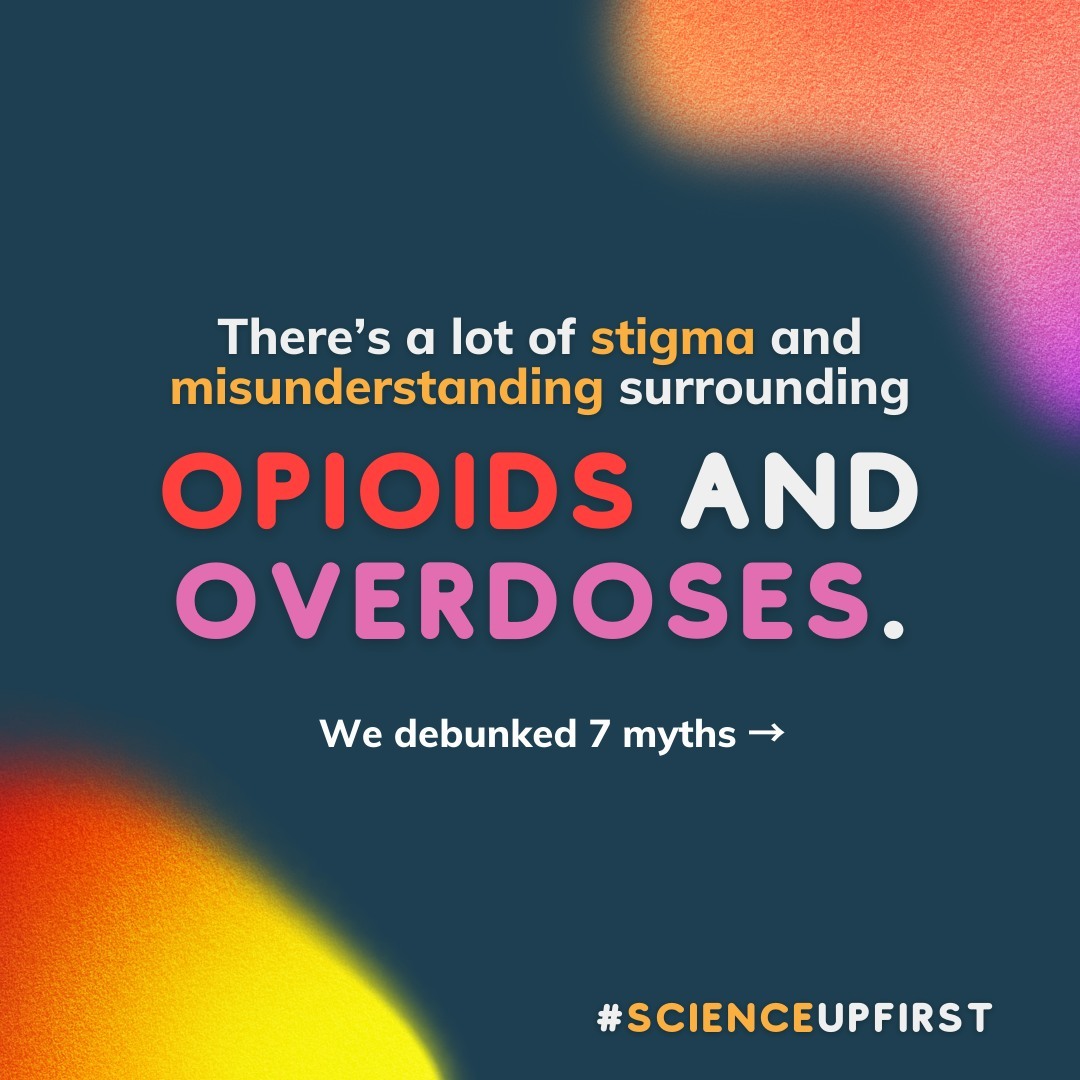
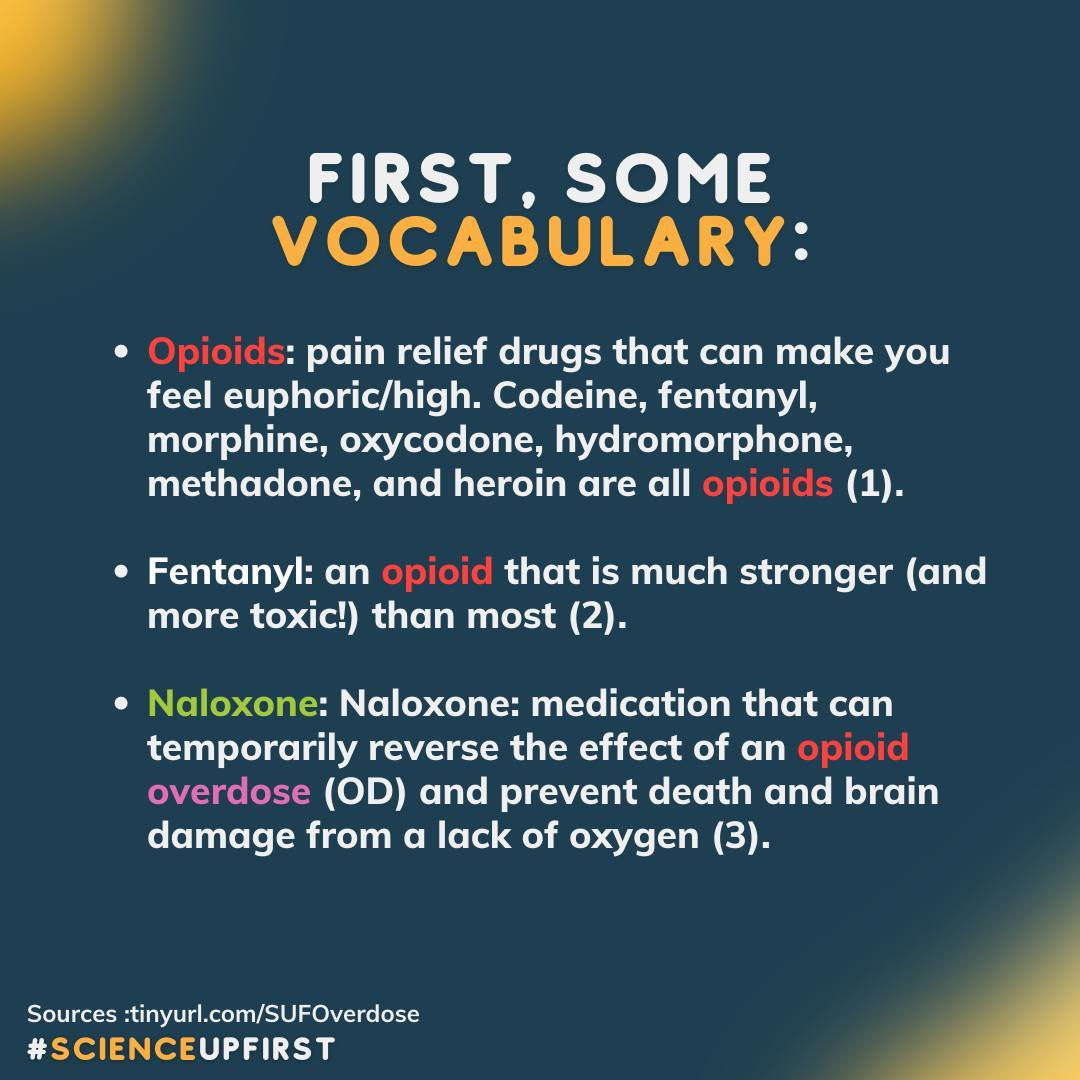
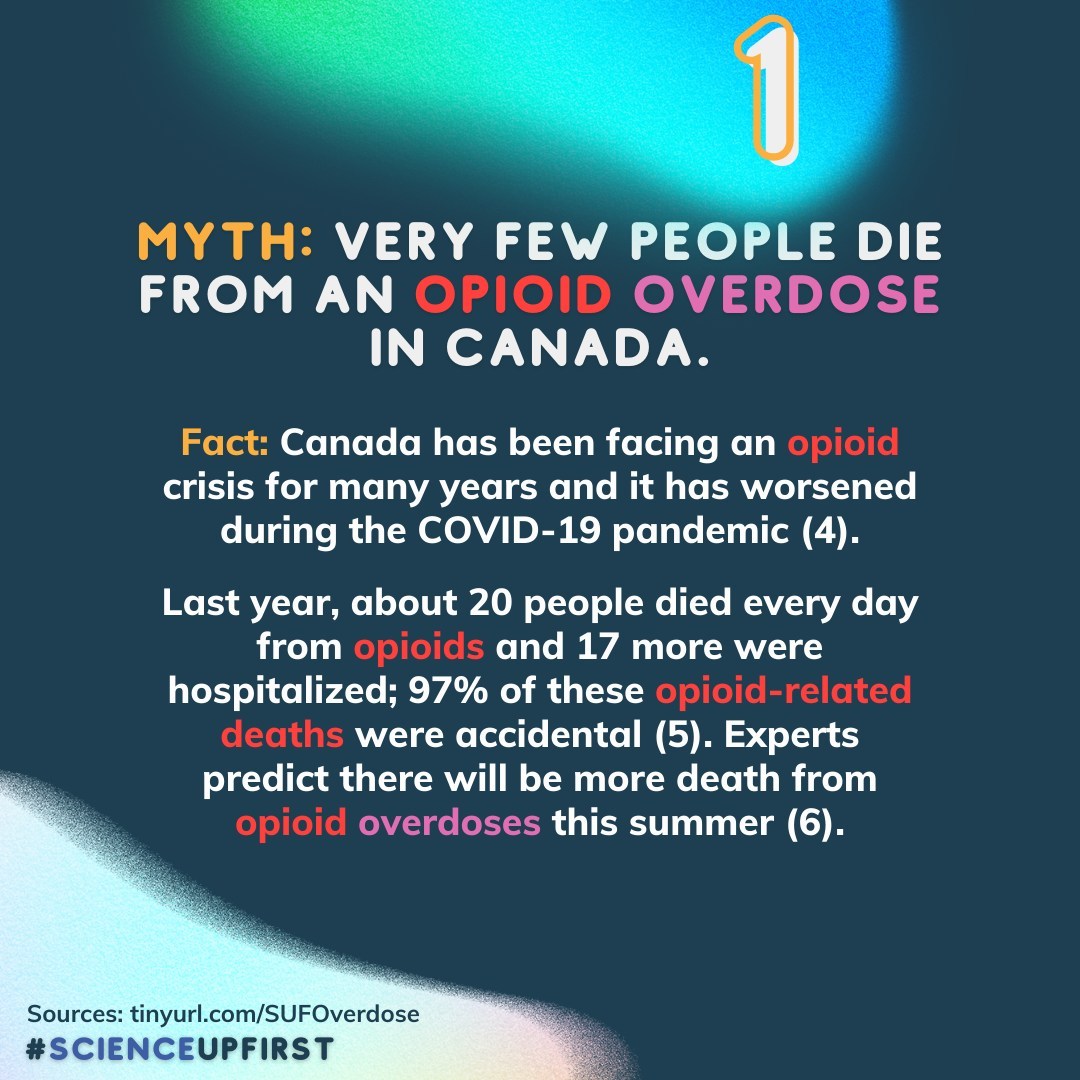
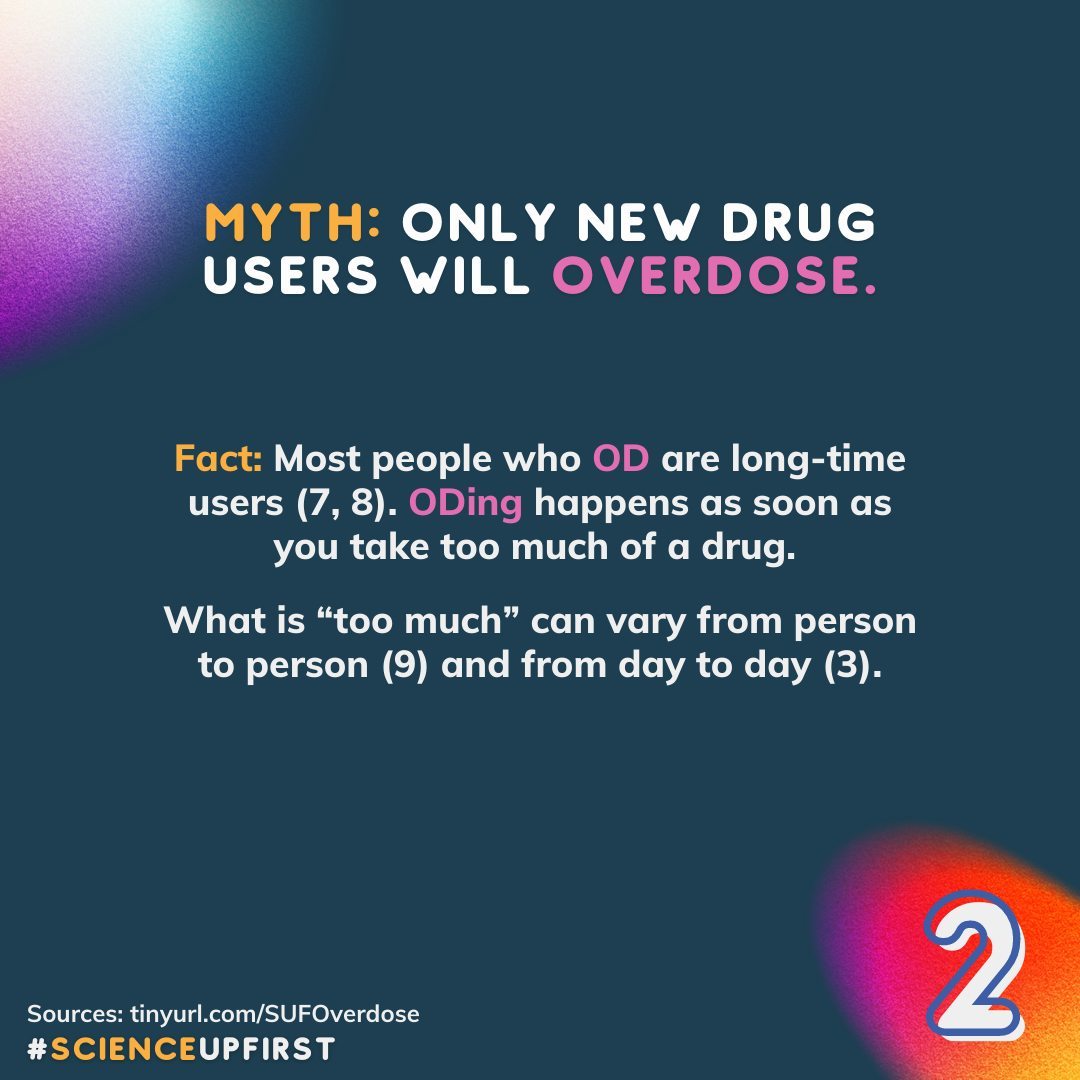
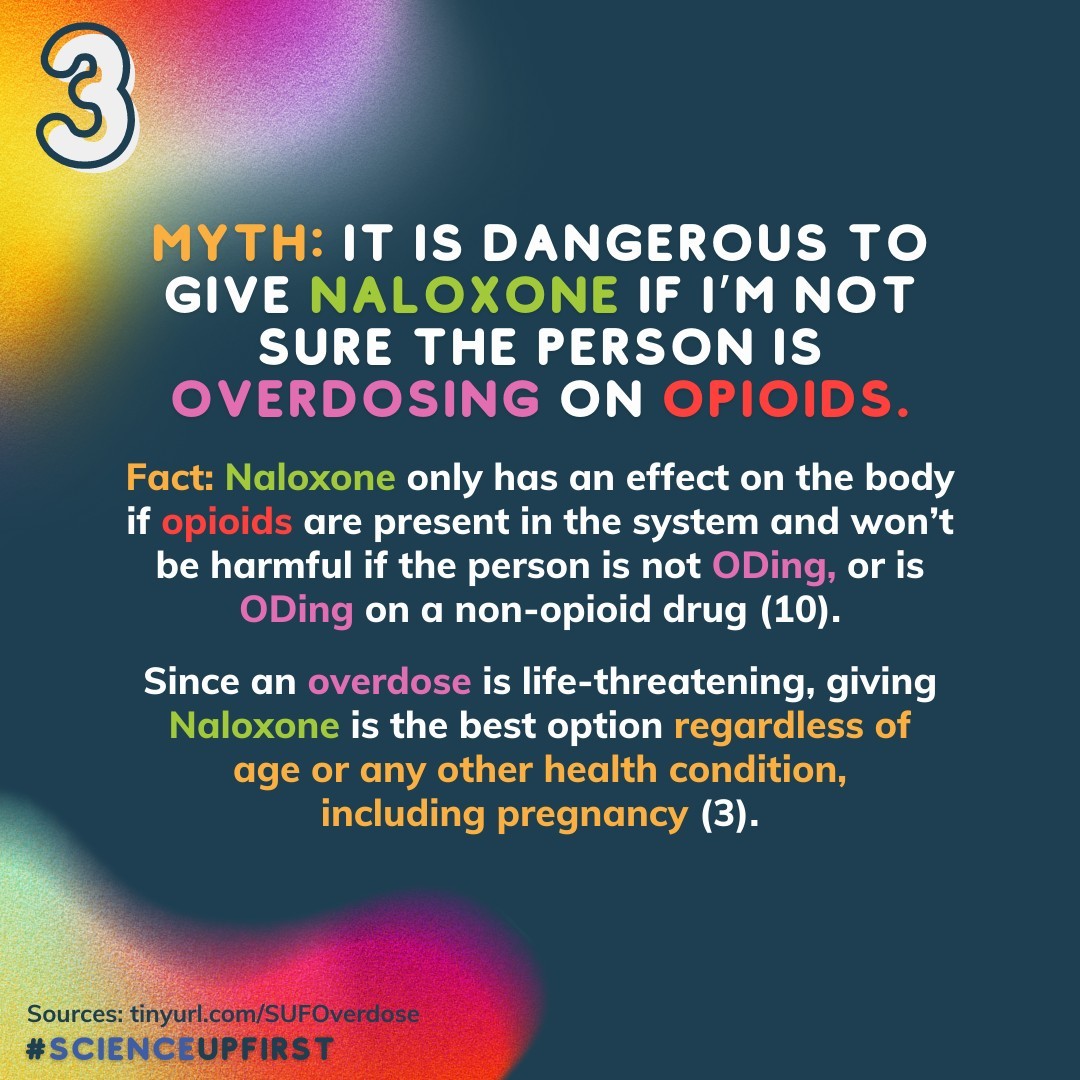
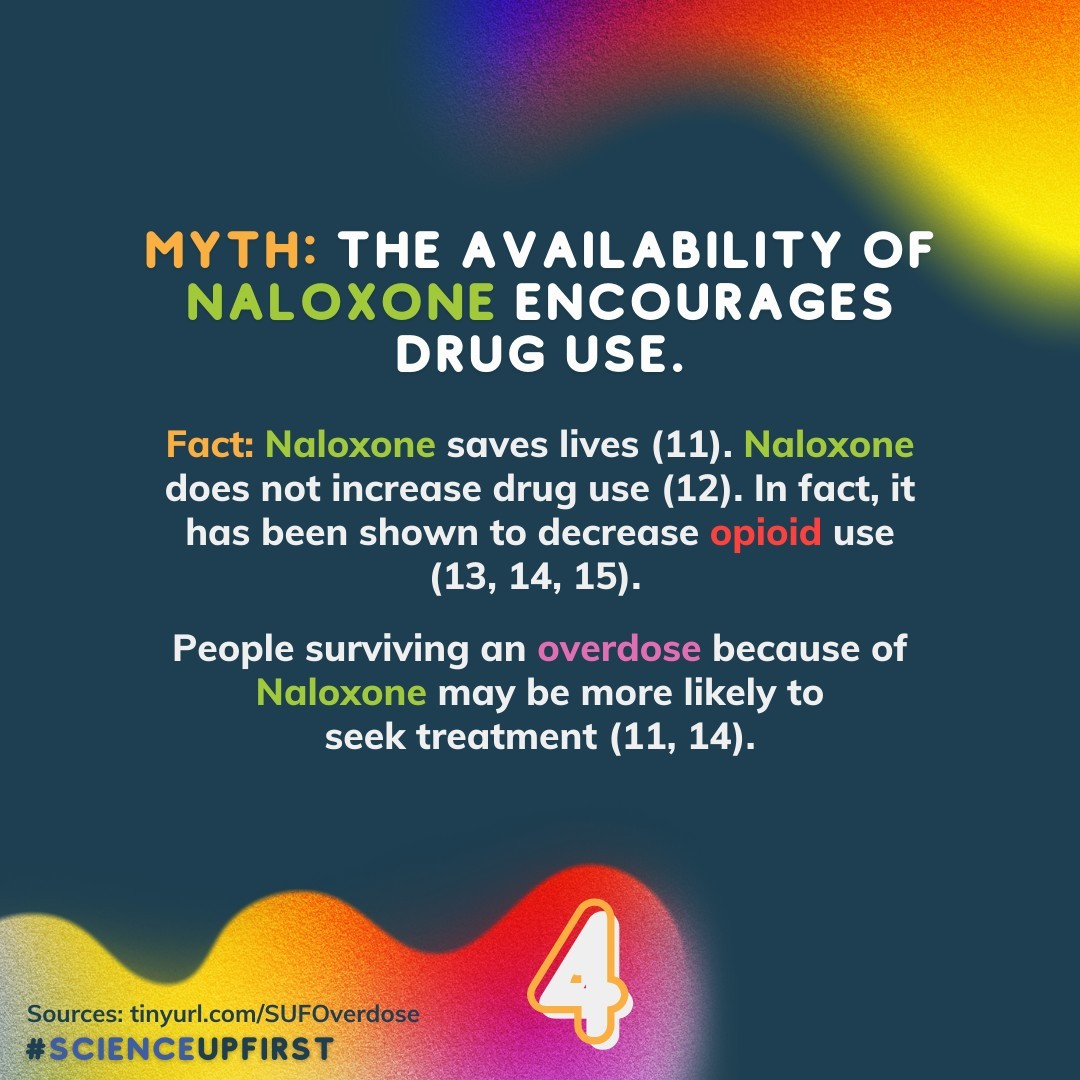
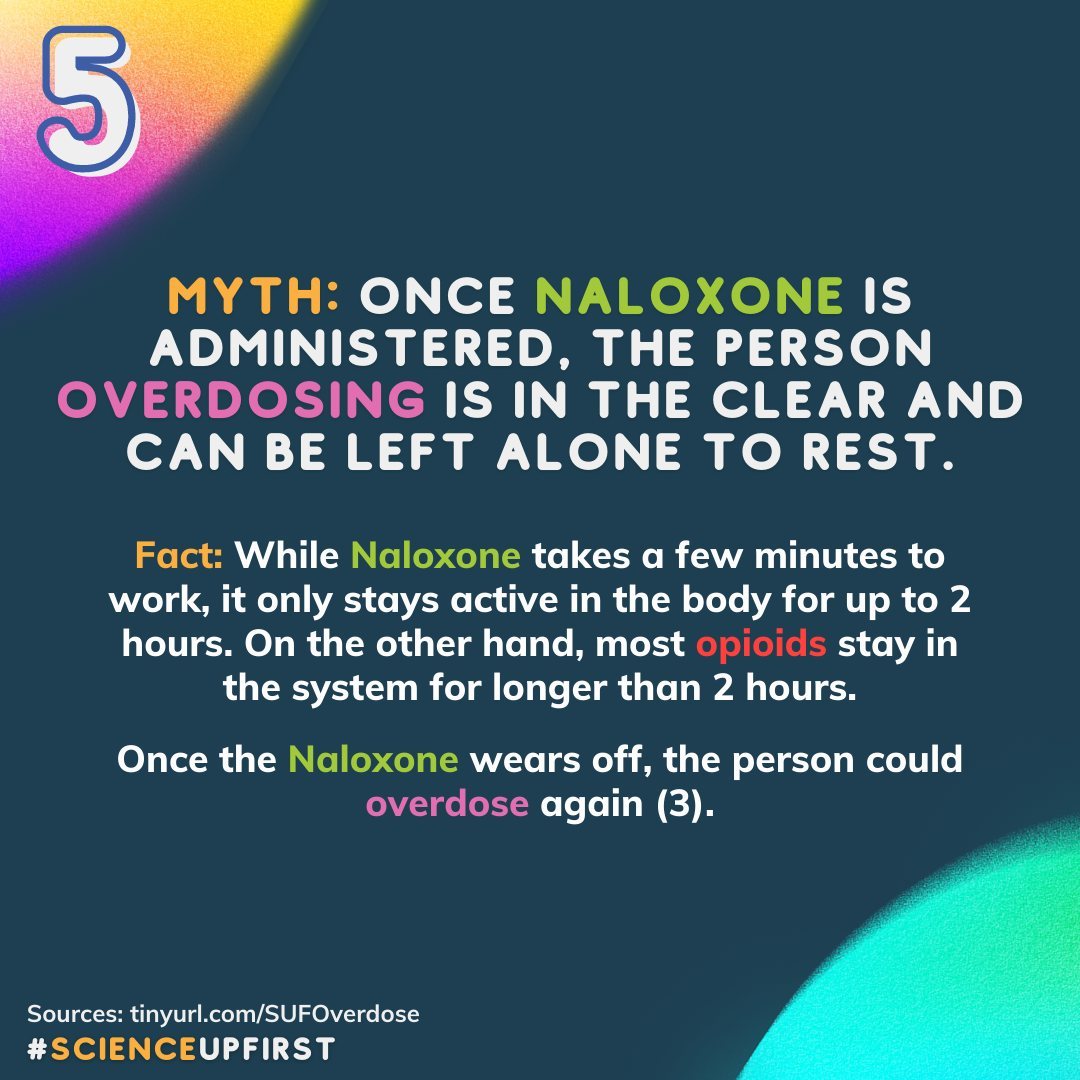
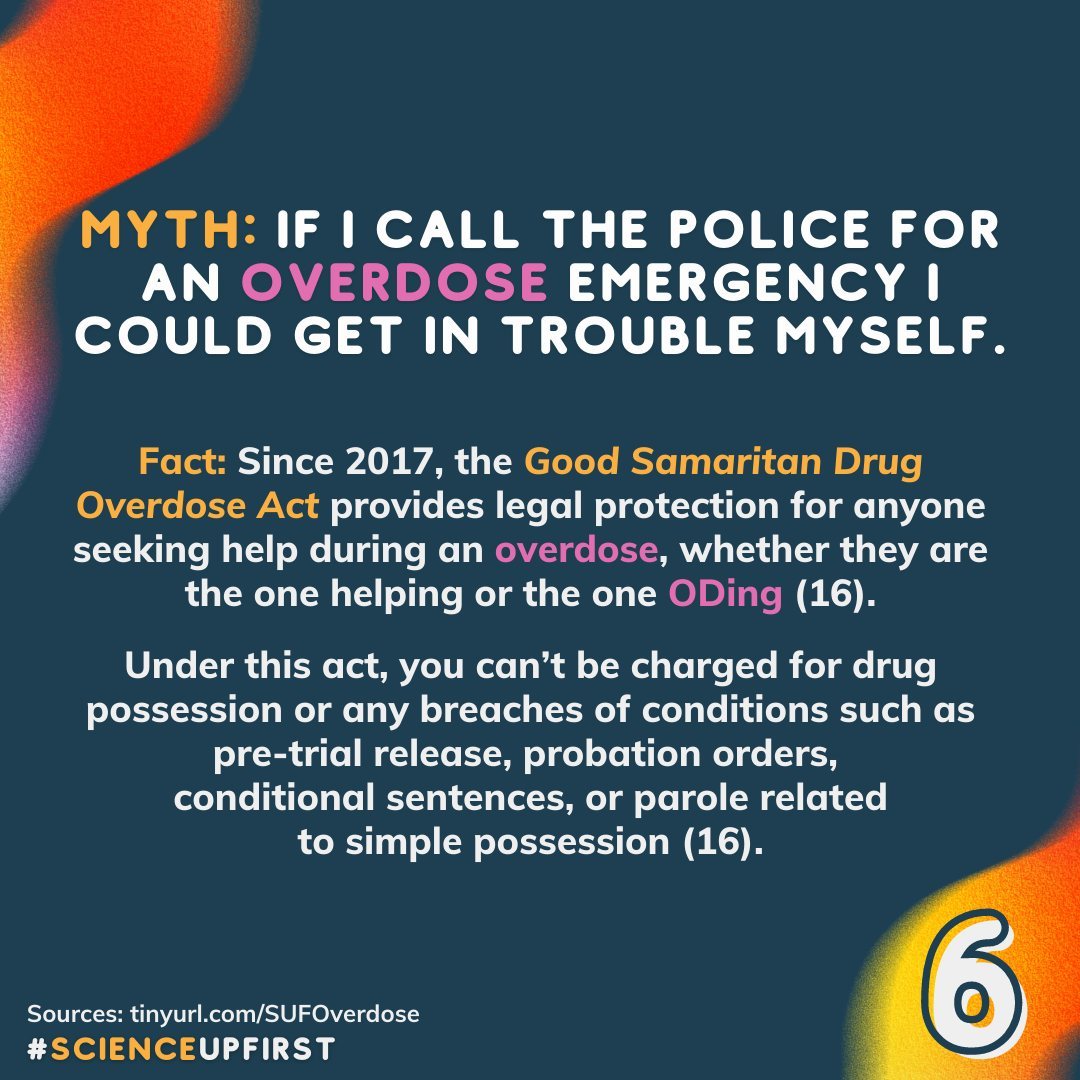
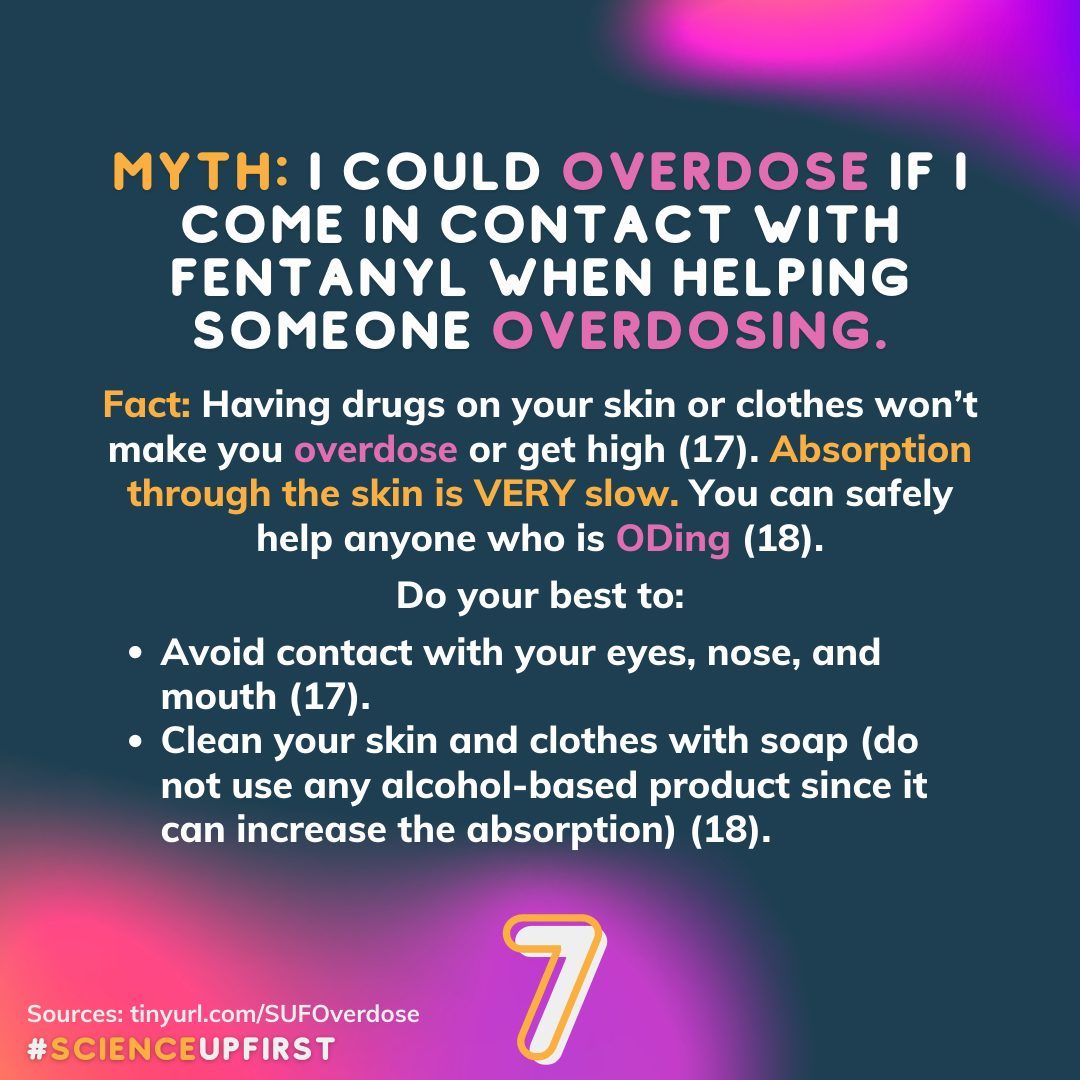
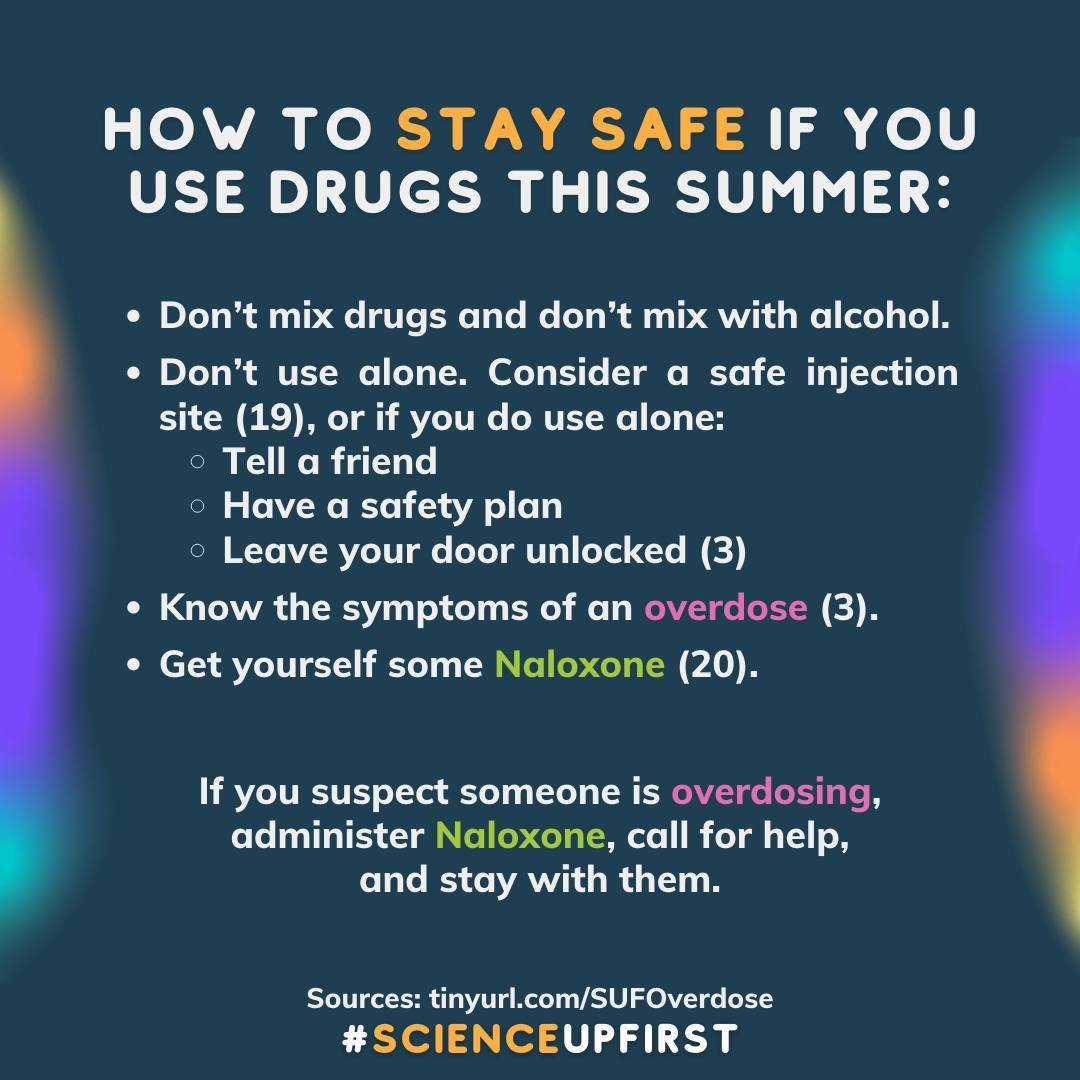
Experts predict there will be more deaths from opioid overdoses this summer. Knowing the facts saves lives:
- On average, 20 people die from an opioid overdose every day in Canada.
- Even experienced opioid users are at risk of ODing.
- Naloxone is safe to give to anyone suspected of overdosing.
- Naloxone does NOT encourage drug use.
- Naloxone only works for up to 2 hours, after that, the person is at risk of ODing again.
- The Good Samaritan Drug Overdose Act provides some legal protection for anyone seeking help during an OD ⚖️
- Having drugs on your skin or clothes won’t make you OD
If you use drugs this summer, use safely. Check out these resources for safe usage tips
Sources
- Opioids – Canada.ca | Government of Canada
- Opioids are pain relief drugs that can make you feel euphoric/high. Codeine, fentanyl, morphine, oxycodone, hydromorphone, methadone, and heroin are all opioids.
- Fentanyl and Carfentanil | Ottawa Public Health
- Fentanyl is an opioid that is much stronger (and more toxic!) than most opioids.
- Preventing and Responding to an Overdose and Naloxone | Ottawa Public Health
- Naloxone is a medication that can temporarily reverse the effect of an opioid overdose (OD) and prevent death and brain damage from a lack of oxygen.
- ODing happens as soon as you take too much of a drug. What is “too much” can vary from day to day.
- Since an overdose is life-threatening, giving Naloxone is the best option regardless of age or any other health condition including pregnancy.
- While Naloxone takes a few minutes to work, it only stays active in the body for up to 2 hours. On the other hand, most opioids stay in the system for longer than 2 hours. Once the Naloxone wears off, the person could OD again.
- How to stay safe if you do use drugs this summer:
- Don’t mix drugs and don’t mix with alcohol
- Don’t use alone, but if you do:
- Tell a friend
- Have a safety plan
- Leave your door unlocked
- Know the symptoms of an OD
- Canada’s opioid overdose crisis | Government of Canada
- Canada has been facing an opioid crisis for many years and it has worsened during the COVID-19 pandemic.
- Opioid- and Stimulant-related Harms in Canada – Public Health Infobase | Public Health Agency of Canada
- Last year, about 20 people died every day from opioids and 17 more were hospitalized; 97% of these opioid-related deaths were accidental.
- Modelling projections for opioid-related deaths during the COVID-19 outbreak | Government of Canada
- Experts predict there will be more deaths from opioid overdoses this summer.
- Overdose Myths | Heather Hayes & Associates
- Most people who OD are long-time users.
- 5 Myths About Opioid Overdose | American Addiction Centers
- Most people who OD are long-time users.
- Drug Overdose Myths | Just Think Twice
- ODing happens as soon as you take too much of a drug. What is “too much” can vary from person to person.
- Common Misconceptions Of Naloxone And Instructions For Use | Amity Medical Group
- Naloxone only has an effect on the body if opioids are present in the system and won’t be harmful if the person is not ODing, or is ODing but on a non-opioid drug.
- Myths and Facts About Naloxone | CVS Health
- Naloxone saves lives.
- People surviving an overdose because of Naloxone might beare more likely to seek treatment.
- No Evidence of Compensatory Drug Use Risk Behavior Among Heroin Users After Receiving Take-Home Naloxone | Addictive Behaviors | Published March 9, 2017
- Naloxone does not increase drug use.
- Evaluation of an overdose prevention and response training programme for injection drug users in the Skid Row area of Los Angeles, CA | International Journal of Drug Policy | Published May 2010
- Naloxone has been shown to decrease opioid use.
- Myth #1: Naloxone encourages substance users to take more drugs. | Indiana State Department of Health
- Naloxone has been shown to decrease opioid use.
- People surviving an overdose because of Naloxone might beare more likely to seek treatment.
- 5 Naloxone Myths Debunked | American Addiction Centers
- Naloxone has been shown to decrease opioid use.
- About the Good Samaritan Drug Overdose Act | Government of Canada
- Since 2017, the Good Samaritan Drug Overdose Act provides legal protection for anyone seeking help during an overdose, whether they are the one helping or the one ODing.
- Under this act, you can’t be charged for drug possession or any breaches of conditions such as pre-trial release, probation orders, conditional sentences, or parole related to simple possession.
- Dispelling Myths About Opioids – Fact Sheet | Canadian Mental Health Association
- Having drugs on your skin or clothes won’t make you OD or get high.
- Avoid contact (fentanyl) with your eyes, nose, and mouth.
- Fentanyl Exposure, Protection, and Treatment Myths and Facts | Health Canada
- Absorption through the skin is VERY slow. You can safely help anyone who is ODing.
- Clean your skin and clothes with soap (do not use any alcohol-based product since it can increase the absorption).
- Interactive map: Canada’s response to the opioid overdose crisis | Government of Canada
- If you do use drugs this summer, consider a safe injection site.
- Naloxone | Government of Canada
- How to stay safe if you do use drugs this summer: Get yourself some Naloxone.
Share our original Bluesky Post!
View our original Instagram Post!

